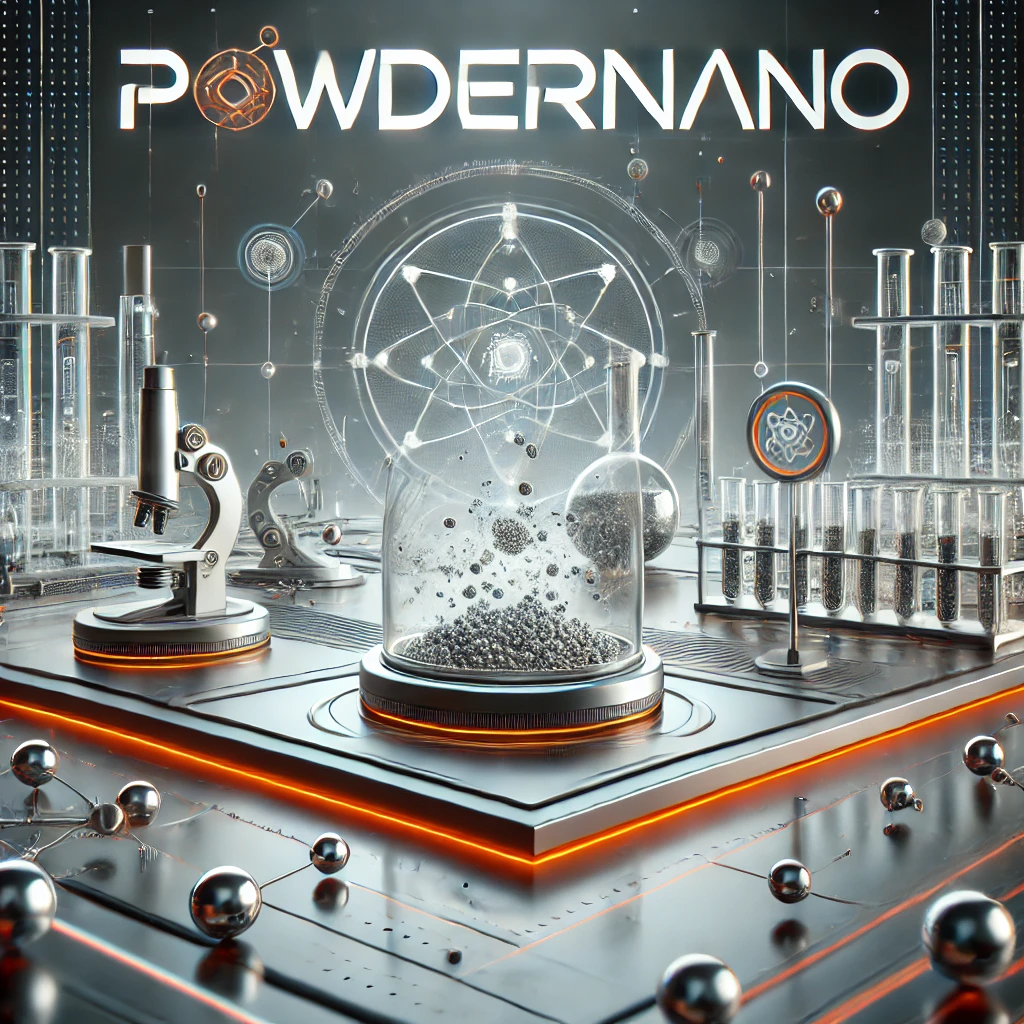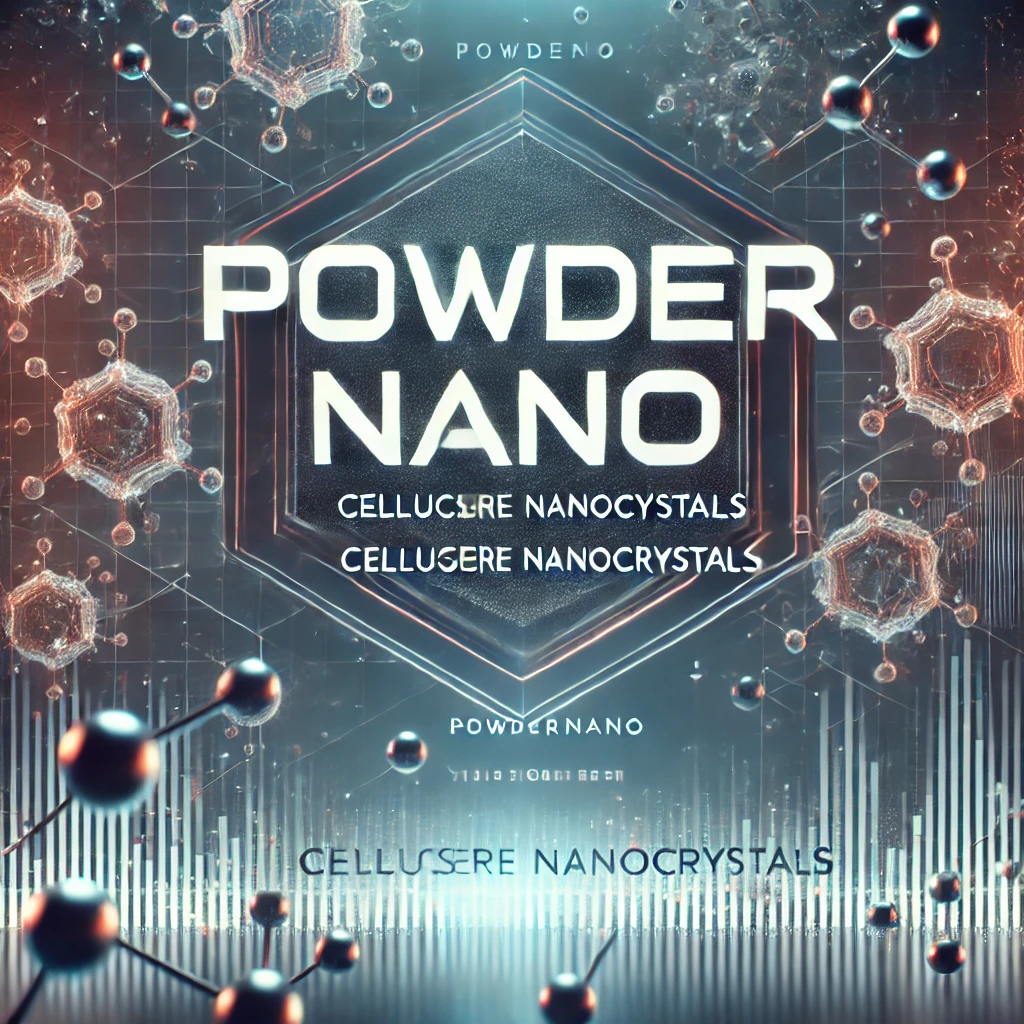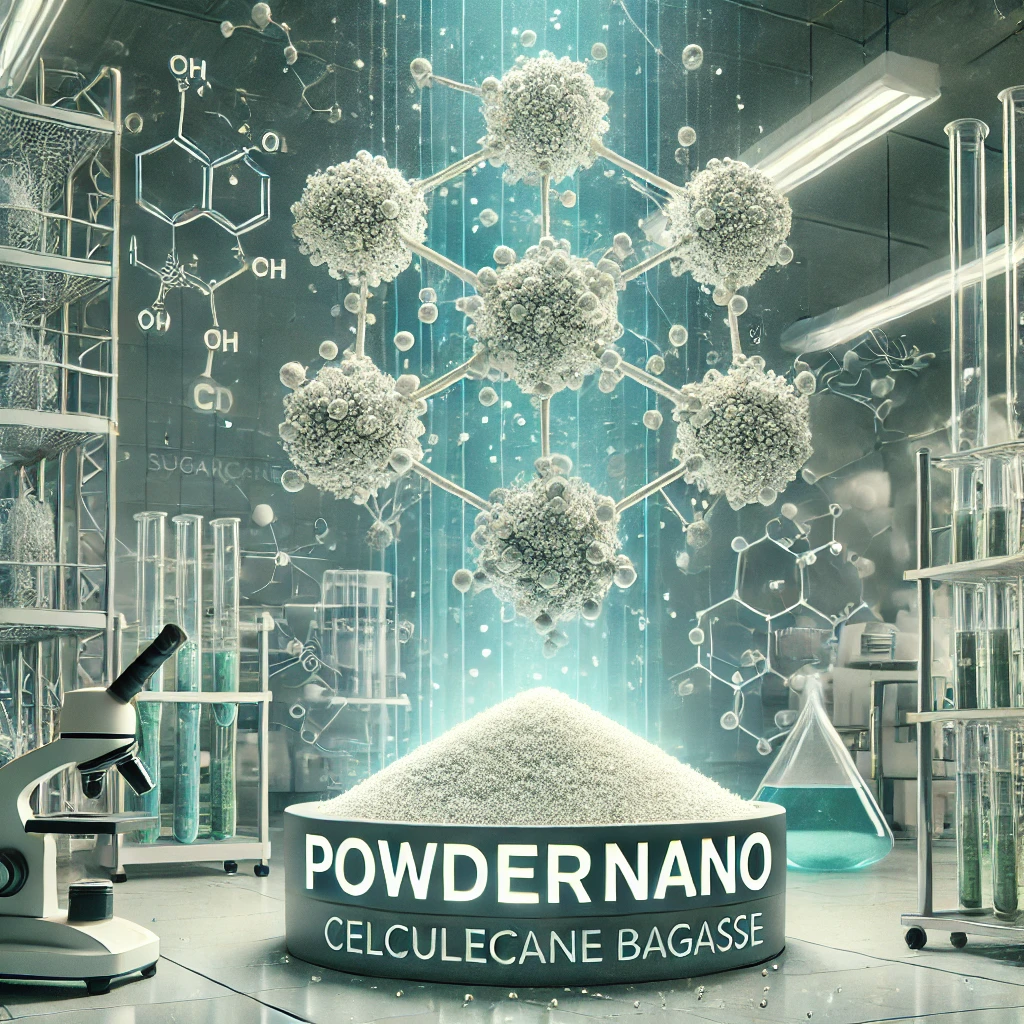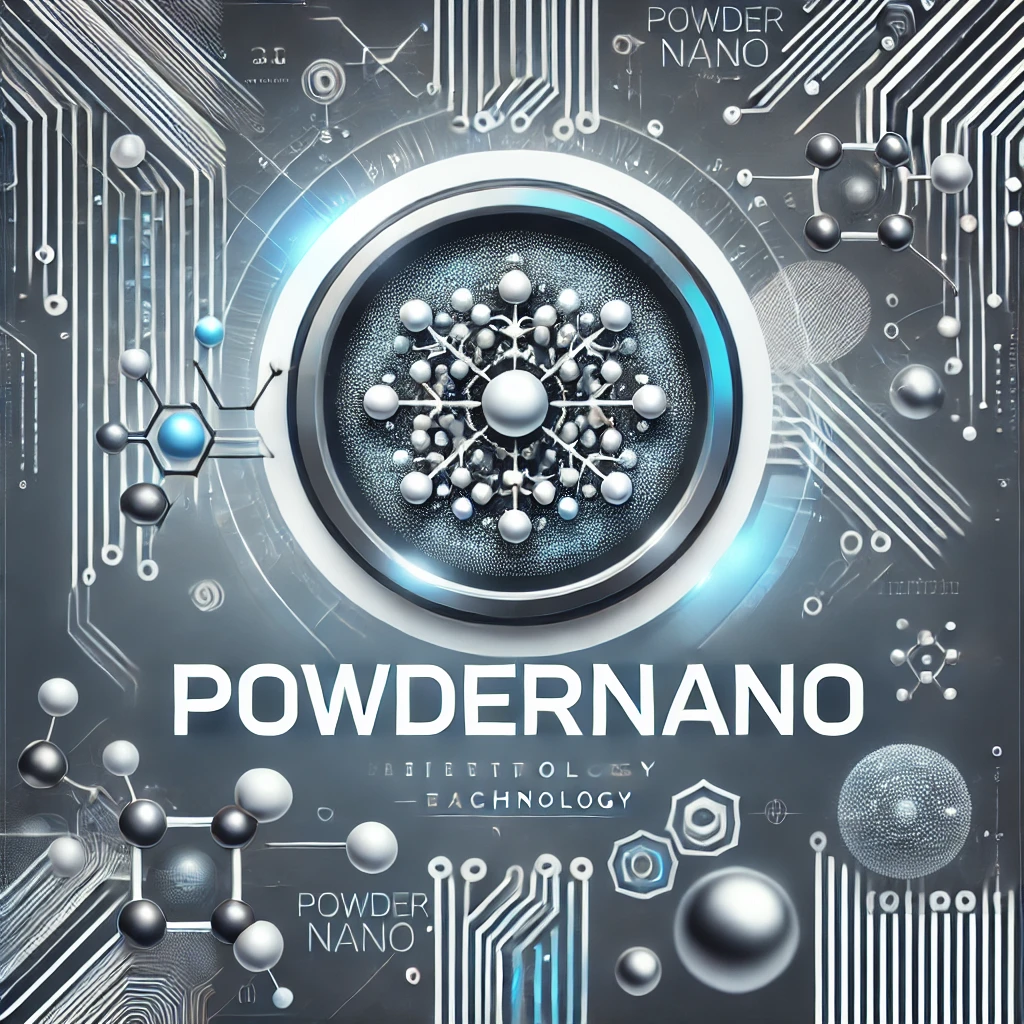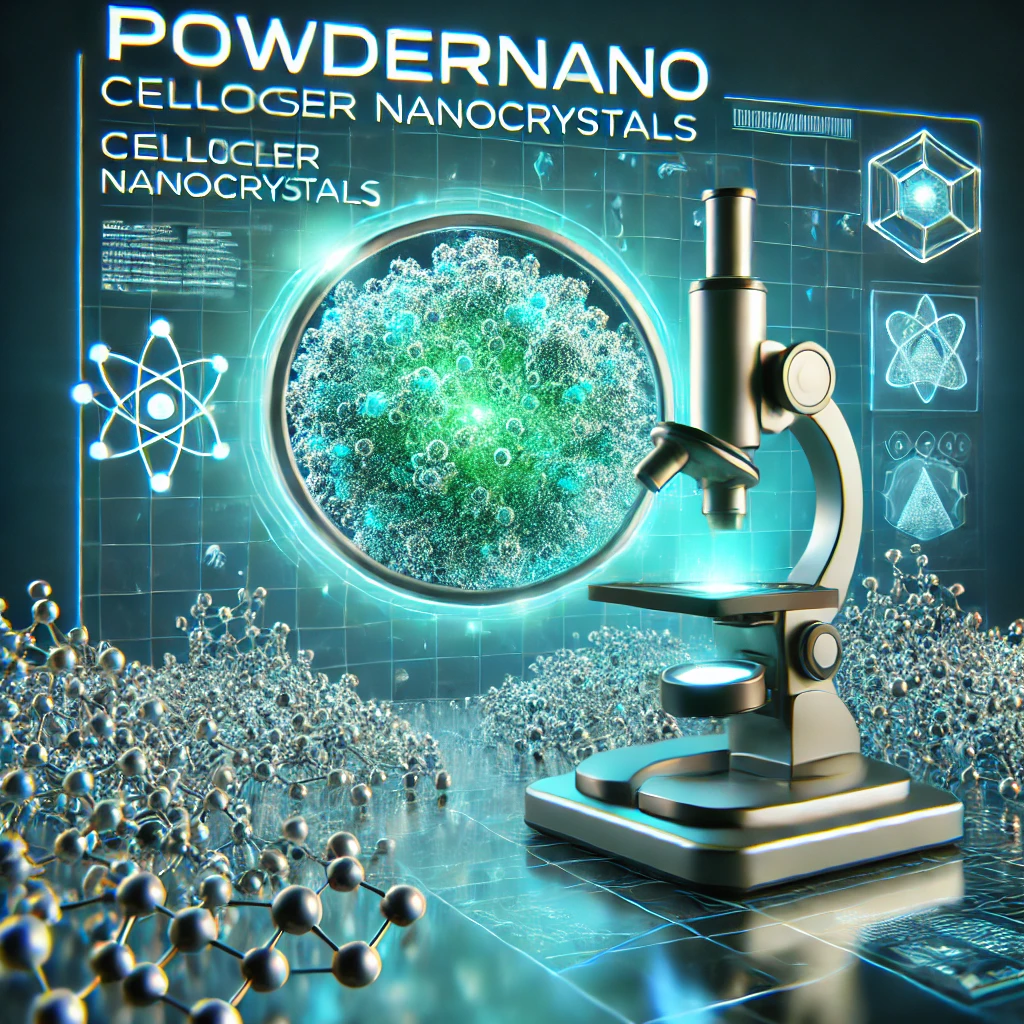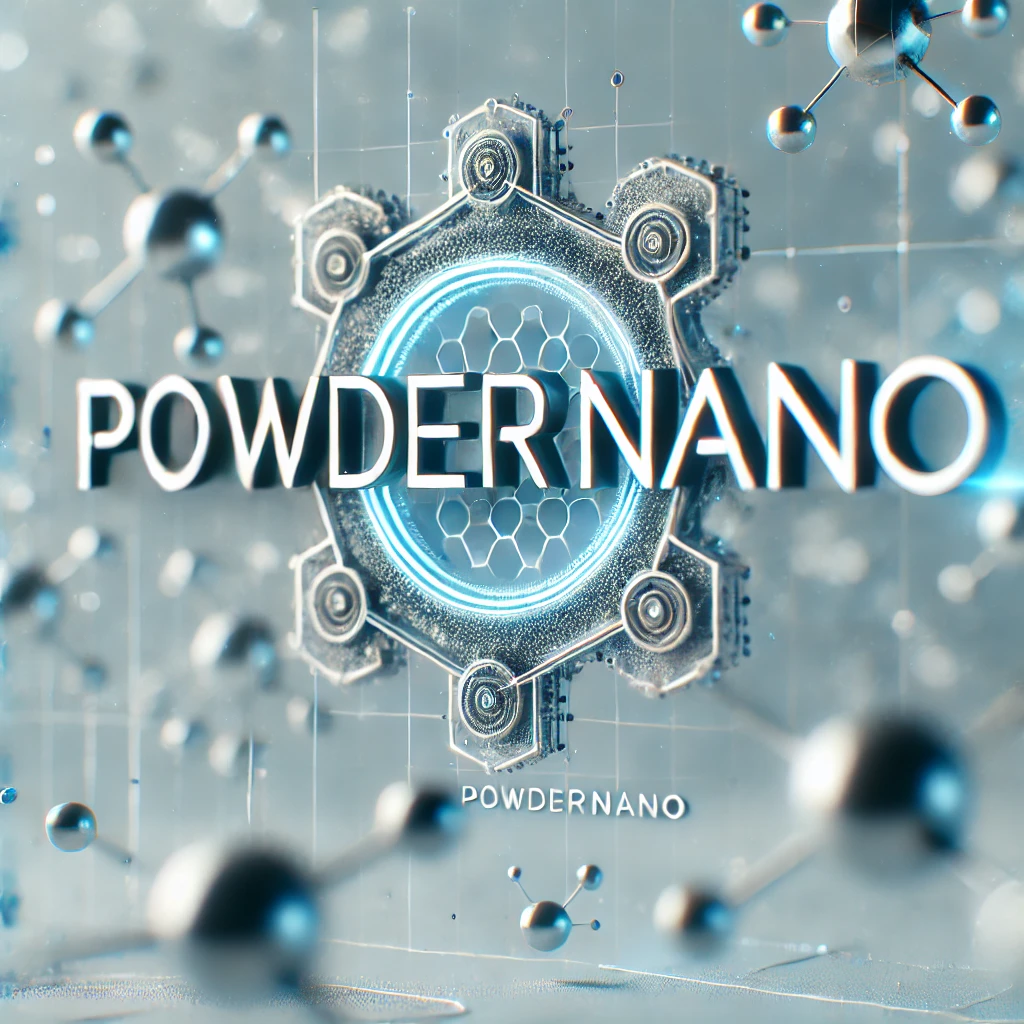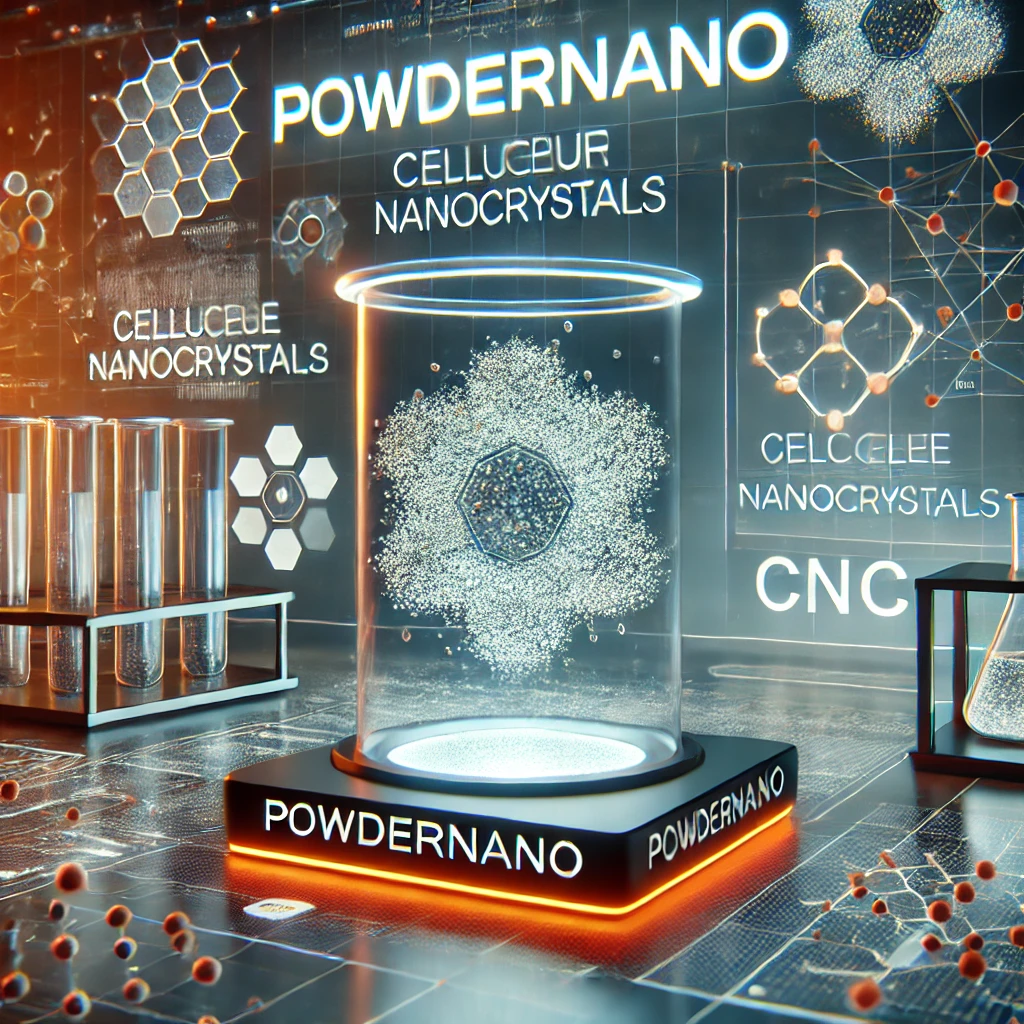Introduction
The food industry is constantly evolving, and with the increasing demand for sustainability, innovation has become a key driver for change. One of the most exciting advancements in recent years is the use of Cellulose Nanocrystals (CNCs)—a highly functional, biodegradable, and sustainable material derived from cellulose. CNCs offer a wide range of applications, from food packaging to emulsifiers and stabilizers, making them a valuable asset in enhancing food quality and sustainability.
At PowderNano, we are dedicated to harnessing the potential of CNCs to revolutionize industries, including food production, by offering cutting-edge nanotechnology solutions. This article explores the significance of CNCs, their applications in food packaging and food delivery systems, and how they contribute to a more sustainable food industry.
What Are Cellulose Nanocrystals (CNCs)?
CNCs are derived from cellulose, the most abundant natural polymer found in the cell walls of plants. These nanocrystals are extracted through a process called acid hydrolysis, which removes the amorphous (less ordered) regions of cellulose, leaving behind highly crystalline and mechanically strong nanostructures.
Key Characteristics of CNCs:
- Biodegradable & Renewable: Sourced from plants, CNCs are eco-friendly and decompose naturally.
- High Mechanical Strength: They offer impressive rigidity and strength, making them ideal for reinforcement in packaging.
- Large Surface Area: Their nanoscale size allows for greater interaction with other materials, improving stability and performance.
- Antimicrobial Properties: CNCs can inhibit the growth of certain bacteria, enhancing food safety.
Evolution of CNCs in the Food Industry
Historically, cellulose and its derivatives have been used as thickeners, stabilizers, and emulsifiers in food products. However, recent advancements in nanotechnology have allowed for the exploration of cellulose at the nanoscale, leading to the emergence of CNCs as a transformative material in food production.
Modern research has enabled eco-friendly production methods of CNCs, making them viable for mass-scale applications in food packaging, additives, and safety measures. These advancements align with the food industry’s shift toward sustainable practices aimed at reducing waste and improving food quality.
Applications of CNCs in the Food Industry
- CNCs in Food Packaging
The incorporation of CNCs in food packaging has introduced a new era of sustainable and high-performance materials. Here’s how CNCs enhance packaging:
- Barrier Properties: CNCs improve resistance to oxygen, oil, and water vapor, significantly extending the shelf life of packaged food.
- Mechanical Strength: By reinforcing packaging films, CNCs allow for thinner yet stronger materials, reducing overall waste.
- Biodegradability: As an alternative to plastic packaging, CNC-based materials are environmentally friendly and contribute to a reduction in plastic pollution.
The integration of PowderNano’s CNC-based materials into food packaging ensures high durability and minimal environmental impact, catering to businesses that prioritize sustainability.
- CNCs in Food Delivery Systems
CNCs have gained recognition in food delivery systems, specifically in the encapsulation and controlled release of bioactive compounds such as vitamins, flavors, and probiotics. Here’s how CNCs contribute:
- Encapsulation: Protects nutrients from degradation caused by oxygen, light, and moisture, ensuring enhanced stability.
- Controlled Release: CNCs enable a slow release mechanism, optimizing nutrient absorption and bioavailability.
- Texture & Stability: They function as natural thickeners and stabilizers in food products like yogurts and sauces, preventing separation and maintaining consistency.
- CNCs as a Food Additive
CNCs are also used in the enhancement of food texture and consistency. Recognized as safe (GRAS) by the FDA, CNCs provide functional benefits such as:
- Emulsion Stability: CNCs aid in the stabilization of foams and emulsions, making them ideal for dairy, beverages, and processed foods.
- Low-Fat Formulations: Used in low-fat food products, CNCs improve texture and mimic the mouthfeel of fats without altering taste.
- Gluten-Free Alternatives: CNCs improve structure and elasticity in gluten-free baked goods, offering better texture and volume.
The Future of CNCs in the Food Industry
Despite the exciting potential of CNCs, there are challenges to overcome, including scaling production, cost-effectiveness, and regulatory acceptance. However, continued research and collaboration between scientists, industries, and regulatory bodies are expected to drive further advancements.
At PowderNano, we are at the forefront of CNC innovation, working to develop sustainable solutions for food packaging and production. As awareness of eco-friendly materials grows, CNCs are poised to become a game-changer in reducing waste, enhancing food safety, and improving overall product performance.
Conclusion
Cellulose Nanocrystals (CNCs) are redefining the food industry by offering sustainable, biodegradable, and high-performance solutions for packaging, additives, and food delivery systems. As industries push toward more eco-conscious choices, CNCs are set to play a pivotal role in shaping the future of food technology.
By integrating PowderNano’s advanced CNC technology, businesses can benefit from innovative, sustainable solutions that enhance both food safety and quality while reducing environmental impact.
Interested in learning more? Contact PowderNano today to explore CNC solutions for your business.
https://powdernano.com/product/cellulose-nanocrystal-nanocrystalline-cellulosecnc/
